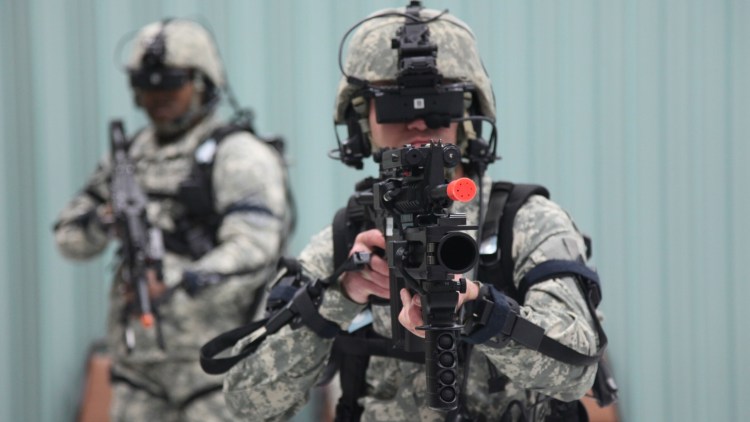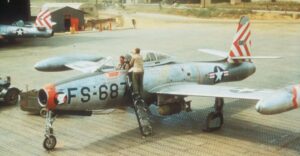Back in the day, when the concept of virtual reality was just a wild glimmer in some tech whiz’s eye, we grunts were out there in the mud, learning the hard way that bullets fly fast and the ground is no friend to a falling body.
But as the wheels of time churned, something remarkable happened—virtual simulation training technology (VST) stormed onto the scene, transforming the battlefield from dirt to digital without losing the grit.
This technology, nevertheless, goes beyond video games as it creates immersive, realistic scenarios that allow troops to hone their skills in a safe, controlled environment.
The Evolution of Military Training
Traditionally, training was all about the boots-on-the-ground approach, diving headfirst into live exercises that chewed up resources like a starving beast.
Sure, there’s no substitute for the real thing, but those drills came with a hefty price tag—logistical nightmares, safety headaches, and a drain on Uncle Sam’s wallet.
And let’s not forget, no matter how carefully you plan, you can’t control every bullet in a live-fire exercise.
Enter Virtual Simulation Training
So, this is where virtual simulation training enters. And boy, let me tell you, this isn’t your kid’s video game setup. We’re talking high-octane, sweat-inducing simulations that throw you right into the thick of it.
Think VR headsets plunging you into a firefight or AR goggles showing you how to strip a rifle blindfolded.
VST is like stepping into the future, where every scenario under the sun, from combat simulations to vehicle operation and medical training, can be dialed up at a moment’s notice.
A medic trains on virtual reality medical simulation (Image source: DVIDS)
Why VST?
Realism: This stuff is as close to the real deal as you can get without the risk of catching lead. It’s all about making split-second decisions that could mean life or death in the real world, sharpening those instincts until they’re razor-fine.
Safety: In the virtual world, the only thing you’re risking is your pride. Mess up, and the worst you’ll suffer is a blow to your ego, not a bullet. It’s a sandbox where the stakes feel real, but the safety net’s always there.
Cost-Effectiveness: Dropping cash on VST might seem steep at first glance, but compared to the endless pit of spending on live drills, it’s a bargain. No more shelling out for ammo, fuel, or fixing up gear that got a bit too roughed up.
Repetition and Feedback: Got a move you need to nail down? Run it again. And again. VST doesn’t tire out or call it quits. And with tech that gives you the lowdown on every misstep, improvement’s just around the corner.
Adaptability: Whatever the mission, VST can morph to fit the bill. Urban warfare, desert patrols, you name it—this tech twists and turns to prepare troops for any theater.
Soldiers learn to operate a Stinger Man-Portable Air-Defense System during a “Virtual Stinger Dome” training (Image source: DVIDS)
Branching Out Across the Forces
VST has found widespread adoption across all branches of the US Military, each utilizing it to enhance the readiness of their personnel:
1. Army: The Army utilizes VST for infantry training, combat simulations, and vehicle operation, preparing soldiers for the challenges of ground combat in various environments.
2. Navy: The Navy employs VST for shipboard firefighting, damage control, and navigation training, ensuring sailors are proficient in critical maritime tasks.
3. Air Force: The Air Force utilizes VST for pilot training, flight simulations, and maintenance procedures, enabling airmen to hone their skills in a realistic and safe environment.
4. Marines: The Marines integrate VST into their training programs for amphibious assaults, small unit tactics, and close-quarters combat, enhancing the combat readiness of Marine Corps forces.
Future Trends and Innovations
The future is bright for VST, with artificial intelligence (AI), machine learning, and haptic feedback systems waiting in the wings to crank the dial on realism up to eleven.
And when you start mixing the virtual with the real? That’s when the magic happens, creating a training ground that’s as boundless as it is effective.
Airman trains on a virtual reality flight simulator (Image source: DVIDS)
The Bottom Line
Virtual Simulation Training has become an indispensable tool in the arsenal of the US Military, offering a cost-effective, safe, and realistic approach to training and readiness.
Keyword: tool—VST isn’t obviously replacing traditional military exercises but rather supercharging them by providing safe, targeted practice.
It has rewritten the playbook on preparing for war, serving as a testament to how far we’ve come in ensuring that our boys are ready when duty calls.
By providing troops with immersive experiences and opportunities for repetition and feedback, VST plays a vital role in preparing soldiers, sailors, airmen, and Marines for the challenges of modern warfare.
As technology continues to evolve, so too will the capabilities of VST, ensuring that the US Armed Forces remain at the forefront of military readiness and effectiveness.


